Pasta alla puttanesca is a vibrant Italian dish that captures the bold flavors of Naples in just 20 minutes.
Puttanesca sauce is an easy recipe that combines sweet tomatoes, tangy olives, and spicy red pepper flakes.
If you like pasta arrabbiata and spaghetti aglio e olio, this pasta will become a weeknight dinner favorite.

Table of Contents
Why you will love this pasta puttanesca
It’s hard to beat Italian recipes for quick and simple pasta dishes that taste amazing.
This pasta puttanesca is one of those meals that makes you wonder how simple ingredients like tomatoes, olives, and capers can make such a tasty sauce.
It’s all without meat, fish, or dairy and ready in about the time it takes to boil the pasta.
Originally from Naples, pasta puttanesca or alive e chiapparielle in Neapolitan (olives and capers in English) is now famous throughout Italy and worldwide thanks to its simplicity, beautiful colors, and, most importantly, its wonderfully rich and yet balanced taste.
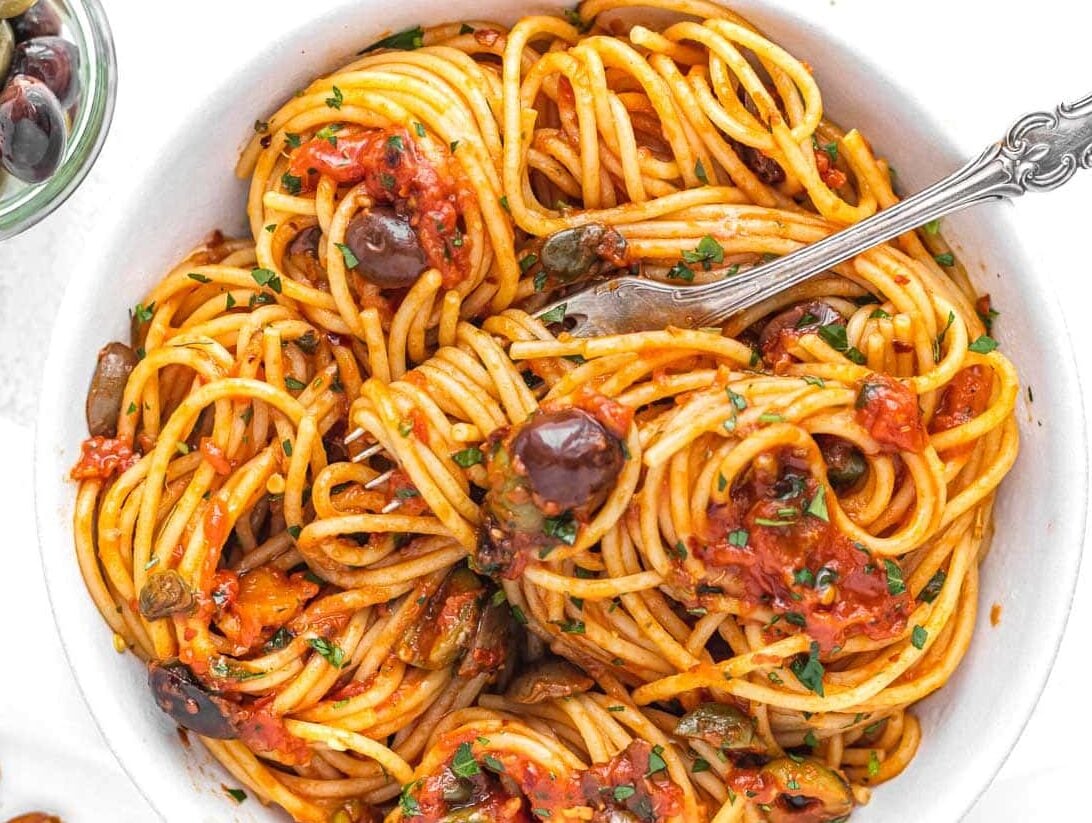
The sauce has it all: the natural sweetness from whole peeled tomatoes, ideally San Marzano, canned at peak ripeness.
The savory and tangy notes from the capers and black Gaeta olives, the fiery heat from red pepper flakes, the fruity mouthfeel of good-quality extra virgin olive oil, and the freshness of the parsley.
Here, we’ll show you how to make this restaurant-worthy vegetarian dinner with little effort and a few pantry staples.
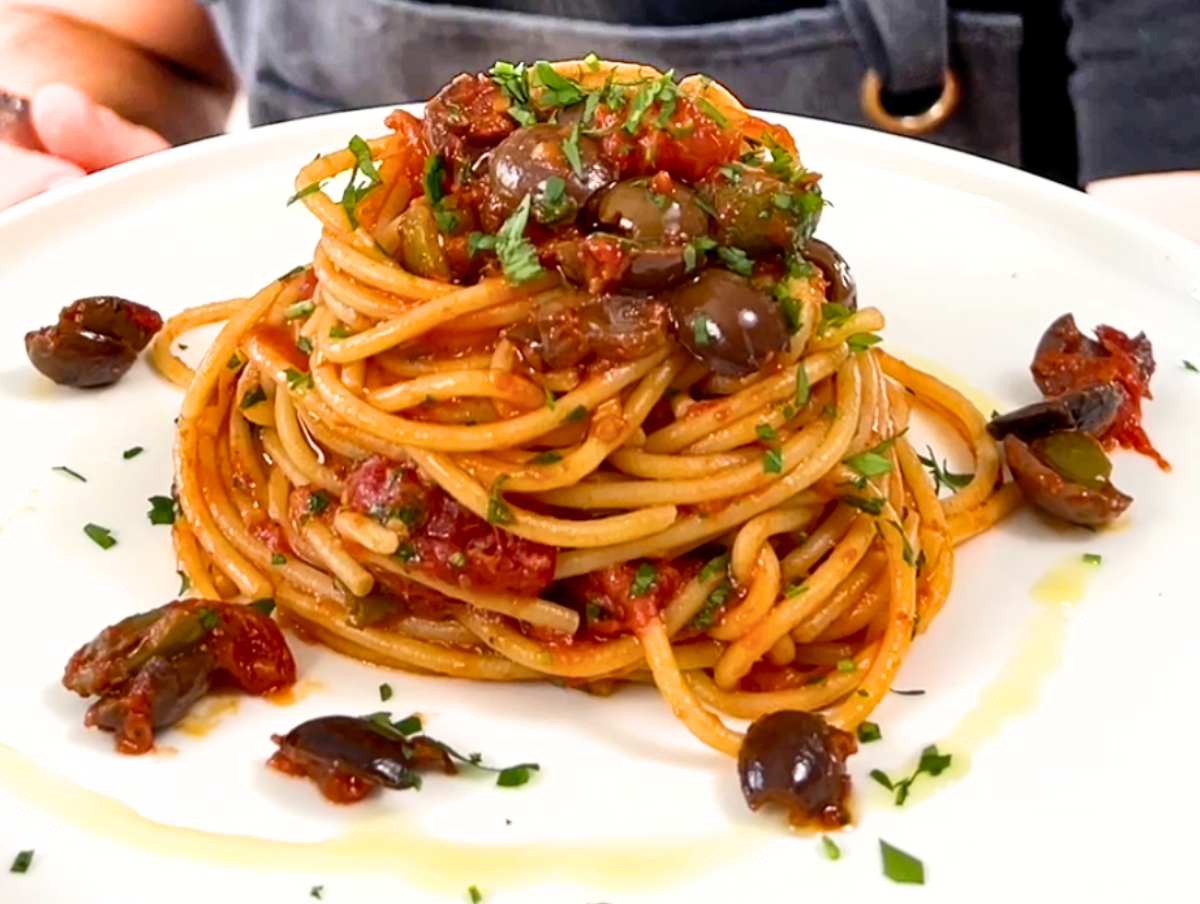
Ingredients for pasta puttanesca
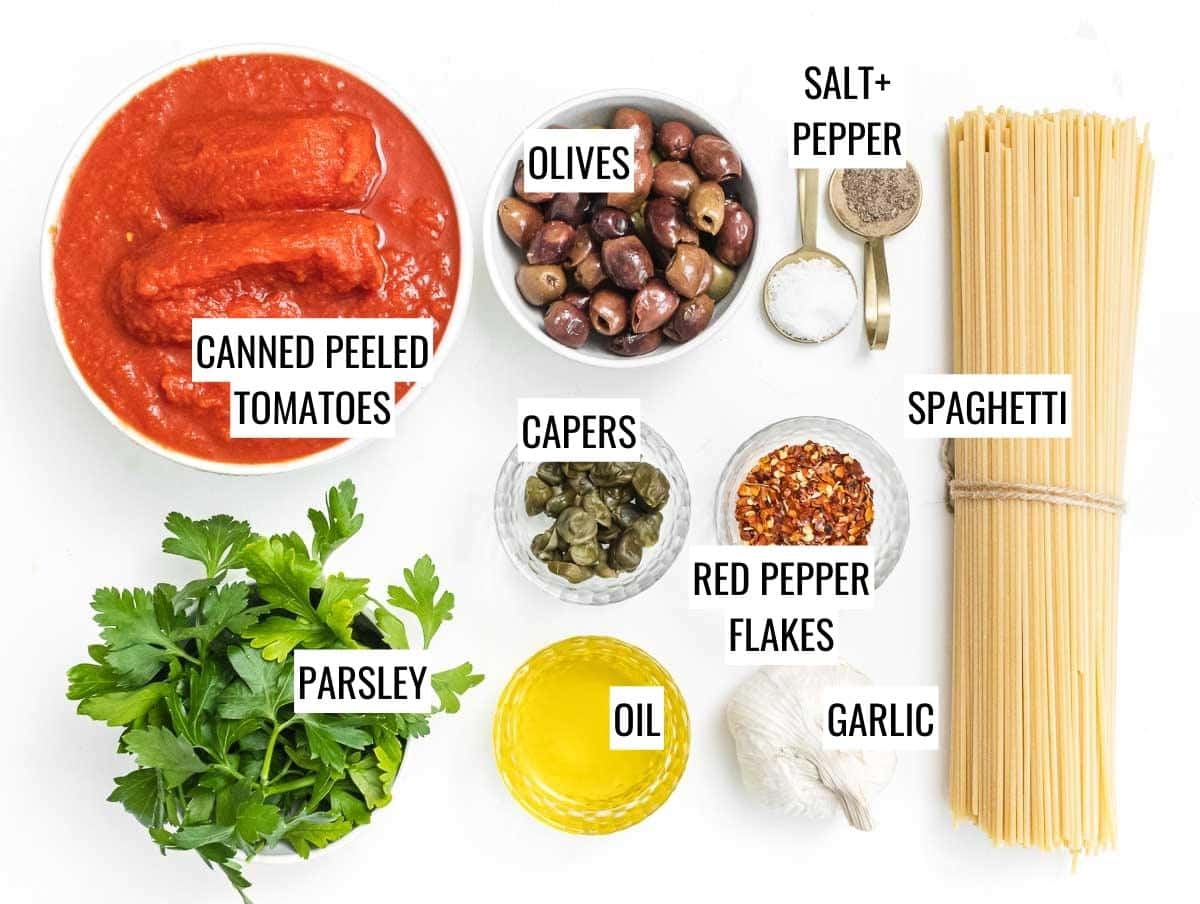
Pasta puttanesca has only a few ingredients. Of course, the higher the quality of the ingredients, the more delicious your meal will be.
Spaghetti
We recommend using bronze-cut spaghetti. Their rugged and dusty surface makes the puttanesca sauce stick better.
Good-quality spaghetti, often imported from Italy, can be found in most supermarkets’ pasta sections.
You can also use regular spaghetti, linguine, or bavette. For gluten-free, use gluten-free pasta.
Tomatoes
The original Neapolitan recipe uses whole canned, peeled San Marzano Tomatoes.
If you can’t find those, get some generic whole canned peeled tomatoes, preferably imported from Italy.
Olives
The original recipe calls for Gaeta olives. Gaeta is a small town between Rome and Naples, with a mild climate that produces world-famous black (actually dark purple) olives.
Tip for finding Gaeta olives: Gourmet grocery stores and Italian specialty markets are the best places to find authentic Gaeta olives.
Kalamata olives, niçoise olives, black oil-cured olives, Picholine olives, or regular black olives are suitable substitutes.
We advise preserving olives in oil and draining them before using them.
Capers
You can use non-pareille capers. They come preserved in brine or salt. In either case, rinse them under cold running water before adding them to the sauce.
Garlic
It’s best to use fresh garlic for this recipe. For a mild garlic flavor, you should crush the garlic and let it simmer in the sauce, then discard it before tossing it in the pasta.
For a more robust garlic flavor, mince or grate the garlic. We like it better with grated garlic.
Parsley
Pasta puttanesca is made and served with a generous sprinkle of finely chopped flat-leaf Italian parsley, which can be found in most supermarkets.
Add dried oregano or fresh basil leaves if you don’t have fresh parsley.
Red pepper flakes
You can add more or less red pepper flakes based on your spice tolerance. You can substitute finely chopped fresh chili or cayenne pepper for red pepper flakes.
Olive oil
We recommend using good-quality extra virgin olive oil for most of our recipes.
It tastes better with a mildly fruity and nutty flavor, is heart-healthy, and is packed with antioxidants.
Salt and pepper
The sauce won’t need salt because the olives and capers are already salted. However, you can add a twist of black pepper.
Note: there are no anchovy fillets in the original Neapolitan spaghetti alla puttanesca.
The recipe from Lazio, an Italian region, however, does include anchovies. If you want to add anchovies, do so at the beginning, with the olives and capers. You’ll only need 3 to 4 anchovy fillets as they are super salty.
Instructions
In a large skillet, warm up the olive oil on medium heat. Add pitted olives cut in half lengthwise, rinsed capers, red pepper flakes, and grated garlic.
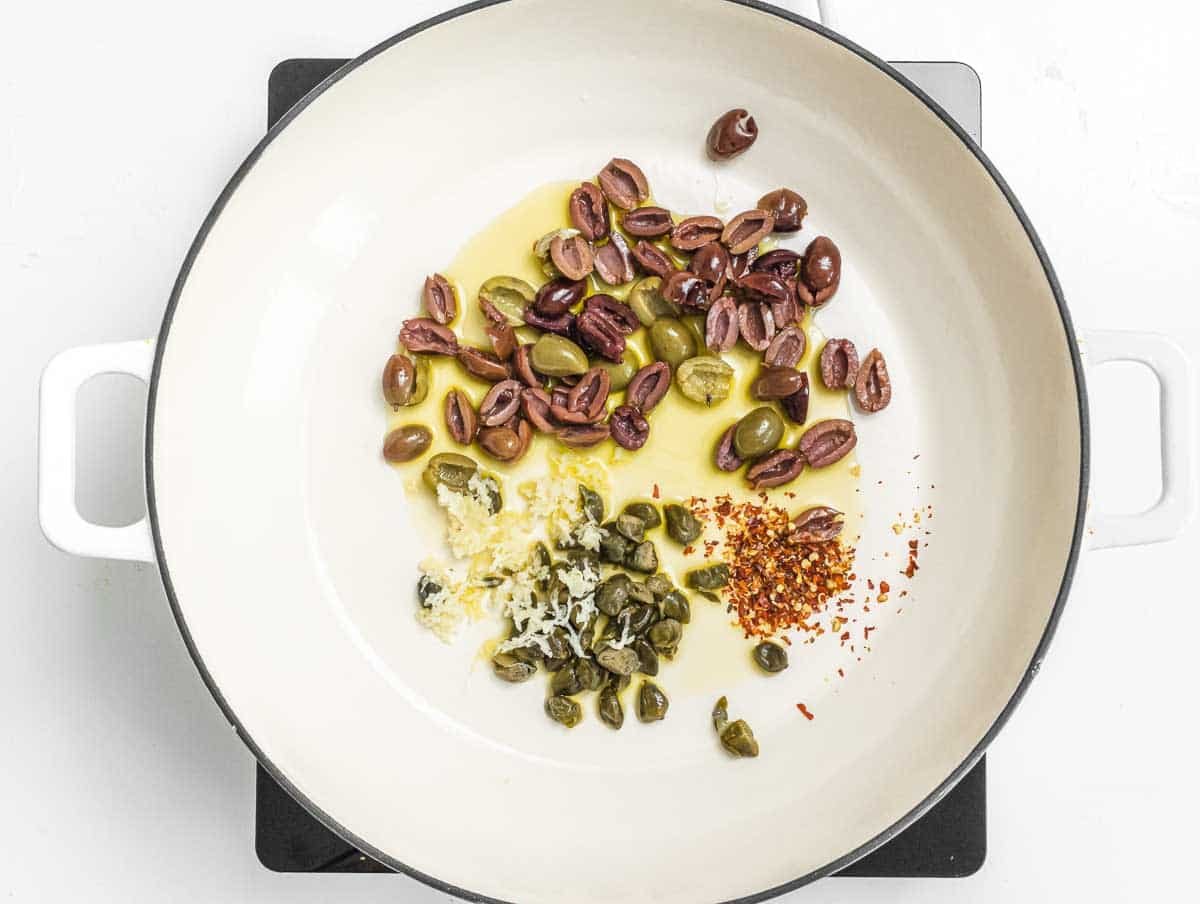
Fry gently for 1 to 2 minutes, making sure the garlic doesn’t burn.
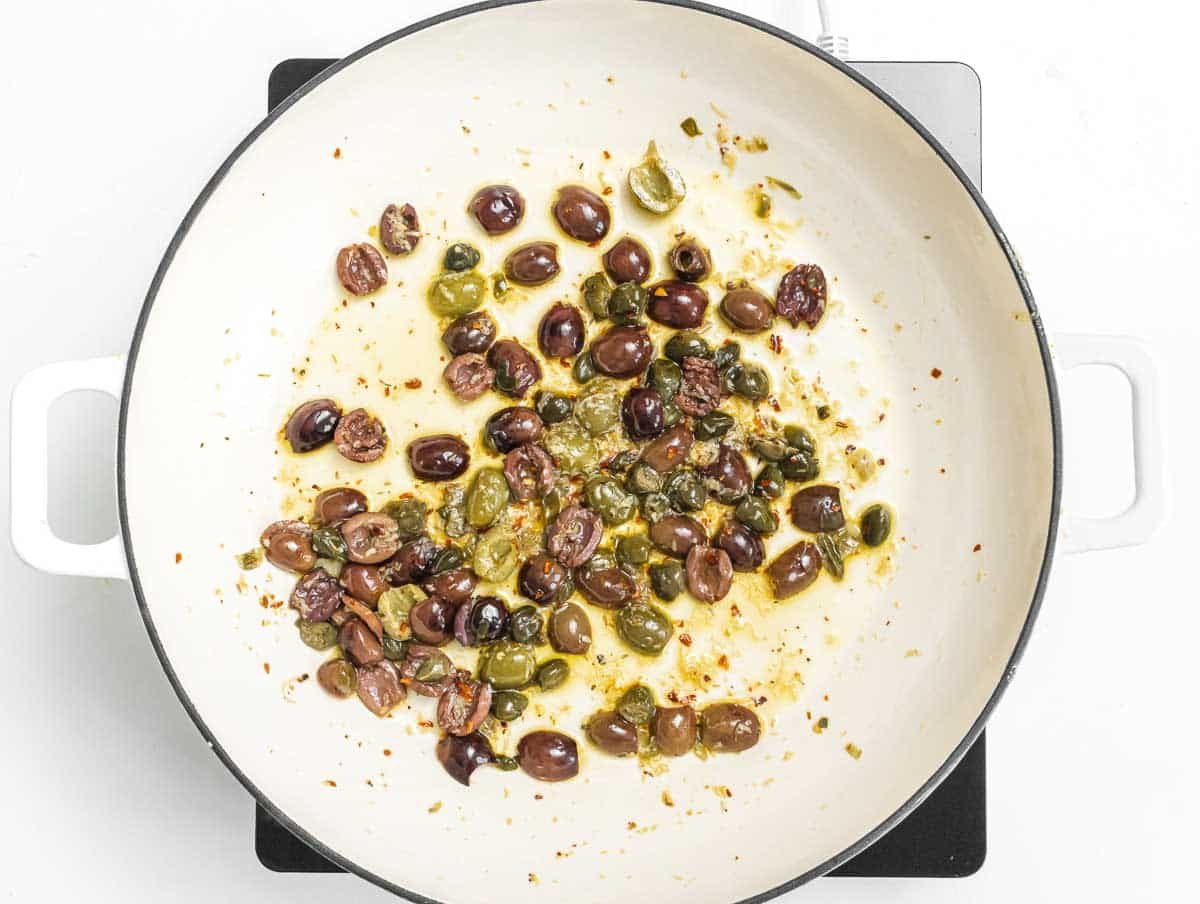
Add the whole canned peeled tomatoes, stir, crush the tomatoes with a fork, and simmer the puttanesca sauce on medium-low heat for 15 minutes.
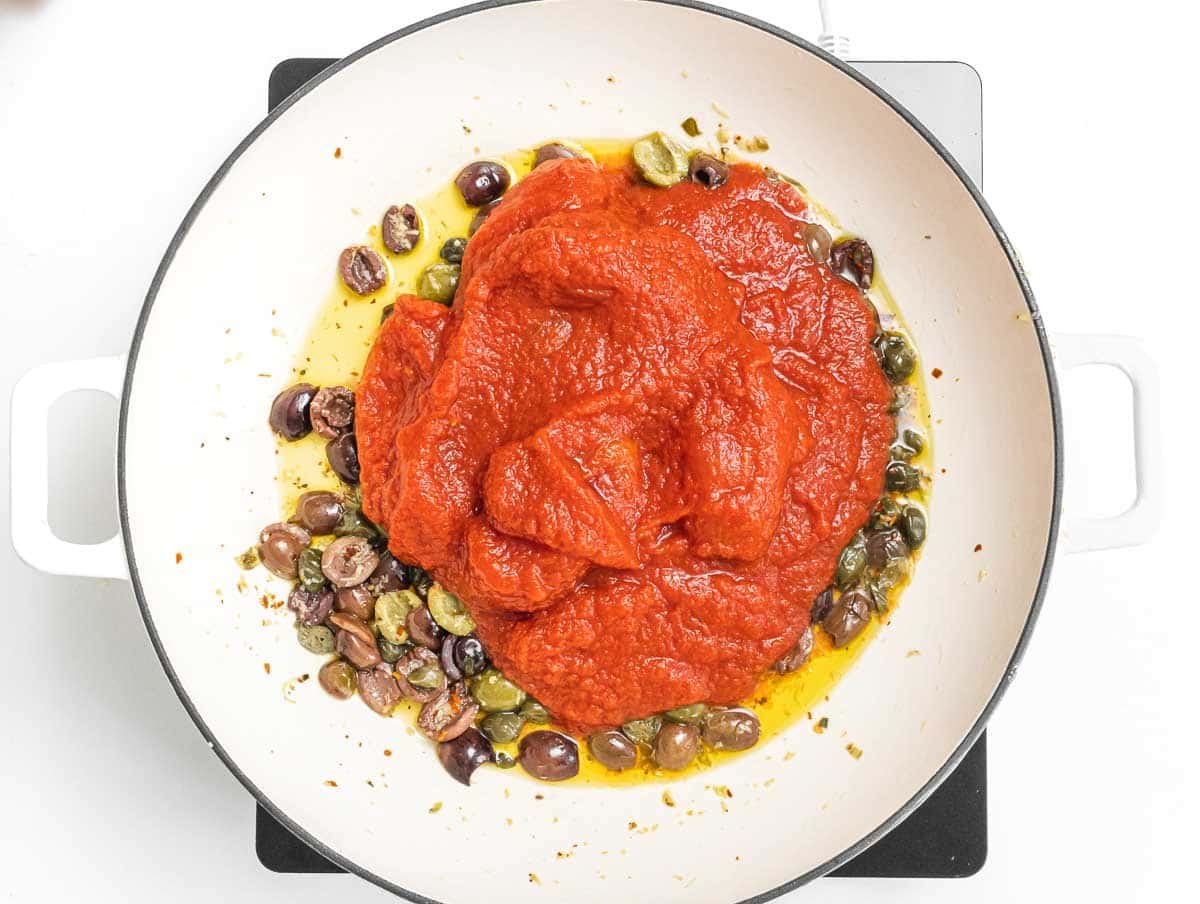
Taste and adjust for salt and black pepper if necessary.
Your pasta puttanesca sauce will probably not need much salt because the olives and capers are salty enough.
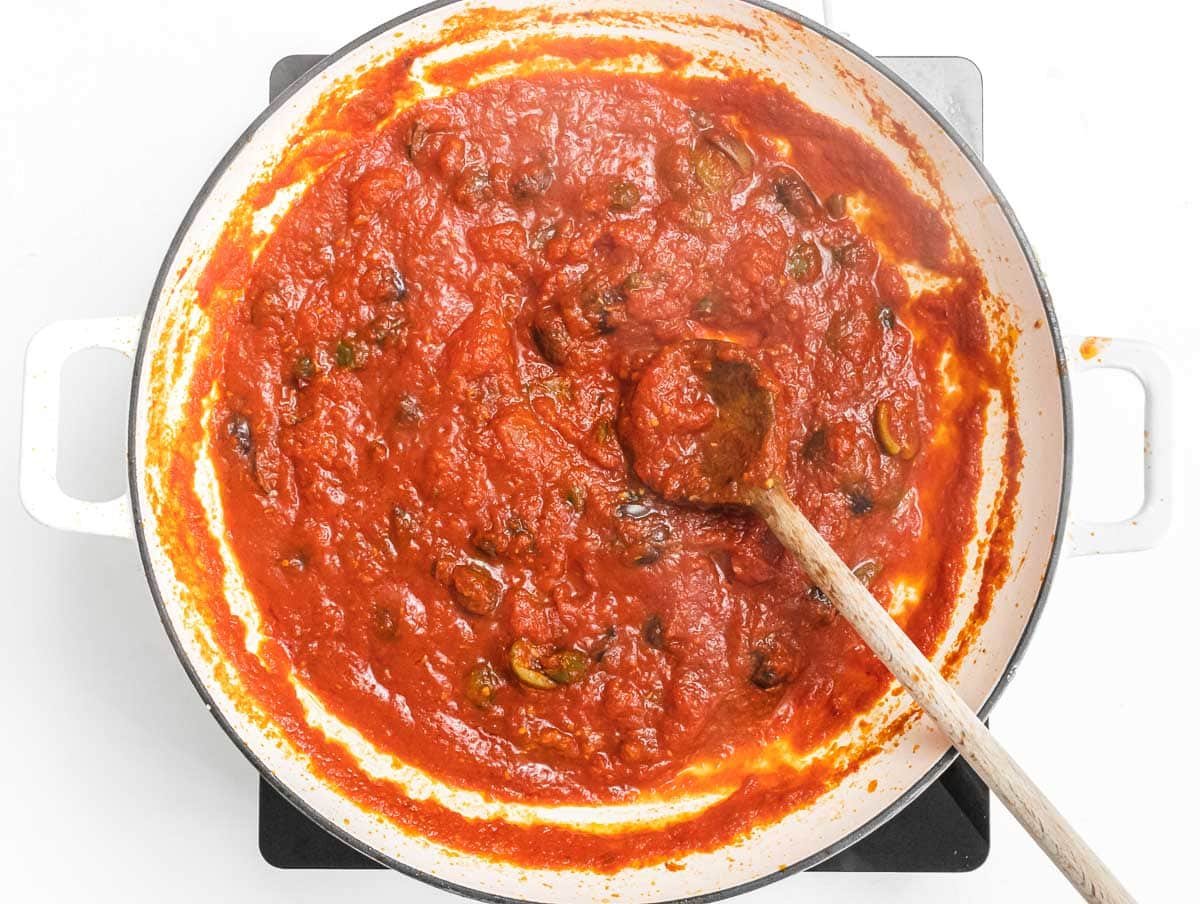
While the sauce simmers, cook the pasta.
Bring a large pot of water to a boil, salt it, and toss in the pasta.
Cook the pasta very al dente; that is 3 minutes less than instructed on the package.
Reserve 2 cups of pasta cooking water, drain the pasta, and add it to the sauce.
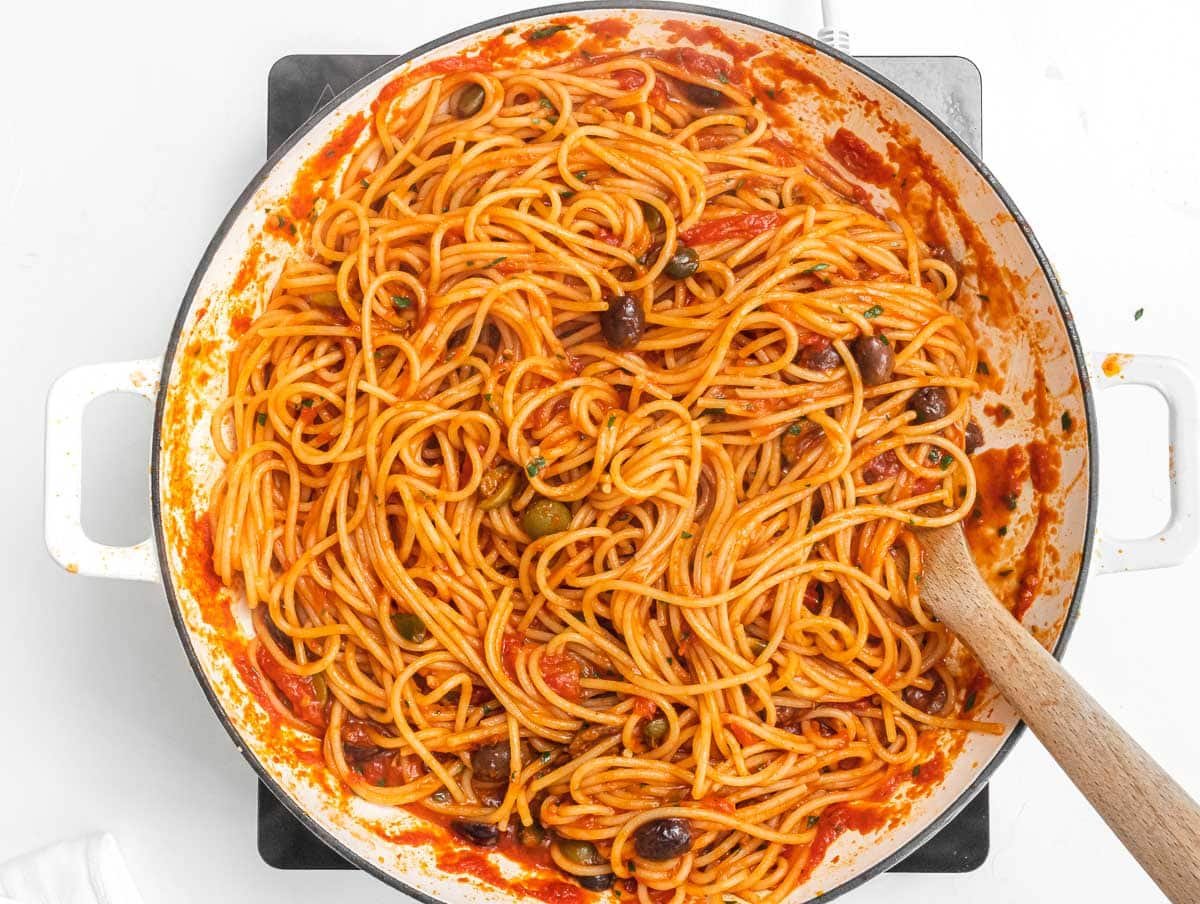
Add 1 cup of reserve pasta water and a handful of chopped flat-leaf parsley, and finish cooking the pasta on medium-high heat.
Toss the pasta for about 2 minutes or until your pasta puttanesca is creamy and al dente.
Add more reserved pasta water if necessary.
Tip: Undercooking the pasta and cooking it in the sauce makes it creamier because it releases its starch after cooking.
Also, the reserve pasta water contains starch, so we add it to the sauce.
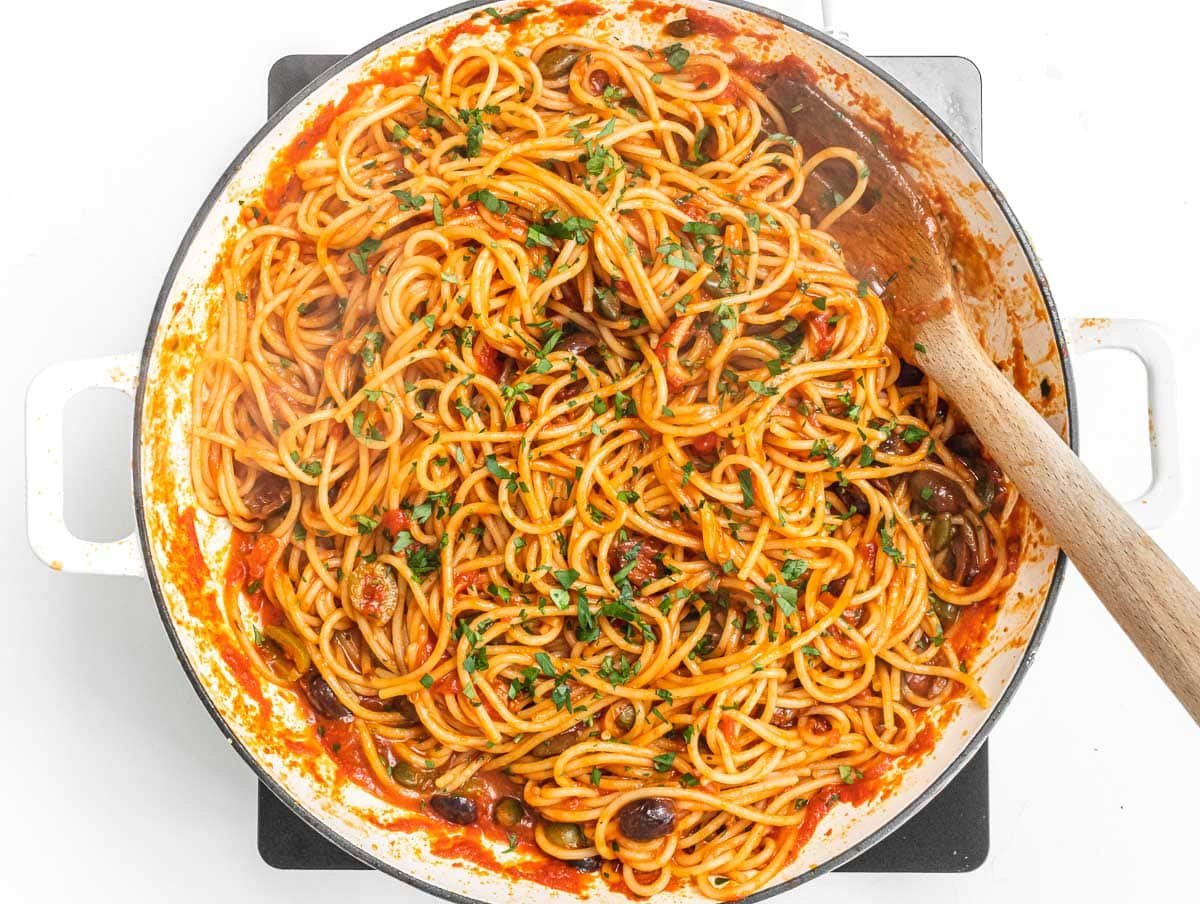
Serve the pasta with a drizzle of good quality extra virgin olive oil and a sprinkle of fresh parsley.

Serving suggestions
Serve with a side salad:
Serve with bread to soak up the sauce left on the plate:
Variations
Puttanesca bianca is a white variation of the classic puttanesca sauce that omits the traditional tomato base and focuses on a white sauce.
To make a white puttanesca sauce, skip step three (in the recipe box below) and omit the tomatoes from the preparation.
Some versions of puttanesca bianca include toasted breadcrumbs as a garnish.
Storage
Refrigerator: store leftover pasta puttanesca in an airtight container in the fridge for up to 2 days.
Reheat in the microwave for 2 minutes with a tablespoon or two of reserve pasta water sprinkled on top.
Alternatively, reheat on a pan with a drizzle of olive oil and a dash of water.
Freezer: this recipe is not suitable for freezing.

Tips
How to cook pasta?
The rule for cooking pasta is 1 liter of water per 100 grams of pasta and 7 grams of salt per 100 grams of pasta.
Our approximation to USA measurements is 8 cups of water (2 quarts) per 8 ounces of pasta and one tablespoon of salt.
For example, to cook 1 pound (450 grams) of pasta, you’ll need about 1 gallon (16 cups or 4 liters) of water and 2 tablespoons (30 grams) of salt.
Questions
No one knows for sure why it’s called pasta puttanesca. However, there are several speculations. Our favorite is this:
“Puttanata” in Italian slang means easy, simple. The story goes like this.
One night a group of friends visited the restaurant owner, chef, and friend Sandro Petti asking him to make them dinner.
It was late after an evening shift, and the chef initially refused the friend’s request because he ran out of fresh ingredients.
The friends insisted, asking him: “Please, Sandro, we have nowhere to go. In Italian, make us something easy” – “facci una puttanata.”
Sandro put together canned tomatoes, olives, and capers and called the dish “pasta puttanesca.” The rest is history.
The original pasta puttanesca recipe has olive oil, garlic, San Marzano tomatoes, Gaeta olives, chili peppers, and flat-leaf parsley.
A variation from the Lazio region in Italy includes anchovy fillets.
Spaghetti.
Pasta puttanesca is a savory, tangy, spicy, garlicky, mildly sweet, and acidic sauce made from San Marzano tomatoes, olives, capers, garlic, and chili.
Puttanesca is an Italian recipe originally from Naples. There’s also a popular variation in the Lazio region in Italy.
You should always salt the pasta water, even if you like it with less salt. Pasta cooked in unsalted water is bland, even if your sauce is salty.
My advice is to refrain from adding salt to sauces like puttanesca when you use salty ingredients like olives, capers, anchovies, and soy sauce.
Similar recipes
EASY PASTA RECIPES: Broccoli pasta, pasta arrabbiata, spaghetti aglio e olio, Pasta alla Norma, vegan mushroom pasta, casarecce pasta, creamy bell pepper pasta, spaghetti pomodoro.
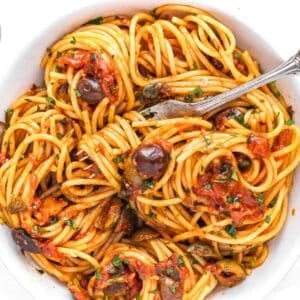
Pasta Puttanesca
Ingredients
- 1 pound spaghetti (+ 1 gallon of water and 2 tbsp of salt to cook it)
- 3 tablespoons extra virgin olive oil
- 2 cloves garlic
- ¾ cup black olives pitted (Gaeta, Kalamata, or other)
- 2 tablespoons capers
- ¼ teaspoon red pepper flakes or more to taste
- 28 ounces (1 large can) whole peeled tomatoes best if San Marzano
- 1 handful flat-leaf parsley
- salt + black pepper taste the sauce and add if necessary
Instructions
MAKE THE SAUCE
- In a large skillet, warm up the olive oil on medium heat. Add pitted olives cut in half lengthwise, rinsed capers, red pepper flakes, and grated garlic.
- Fry gently for 1 to 2 minutes, making sure the garlic doesn't burn.
- Add in the whole canned peeled tomatoes, stir, crush the tomatoes with a fork, and simmer the puttanesca sauce on medium-low heat for 15 minutes.
- Taste and adjust for salt and black pepper if necessary. While the sauce simmers, cook the pasta.
COOK THE PASTA
- Bring a large pot of water to a boil, salt it, and toss in the pasta.Cook the pasta very al dente; that is 3 minutes less than instructed on the package.Reserve 2 cups of pasta cooking water, drain the pasta and add it to the sauce.
- Add 1 cup of reserve pasta water and a handful of chopped flat-leaf parsley, and finish cooking the pasta on medium-high heat, tossing it for about 2 minutes or until creamy and al dente.
- Serve the pasta with a drizzle of good quality extra virgin olive oil and a sprinkle of fresh parsley.
Video
Notes
Nutrition
If you liked this pasta, you might also like:
Collections
45 Easy Pasta Recipes
Collections
30 Easy Italian Recipes
Collections

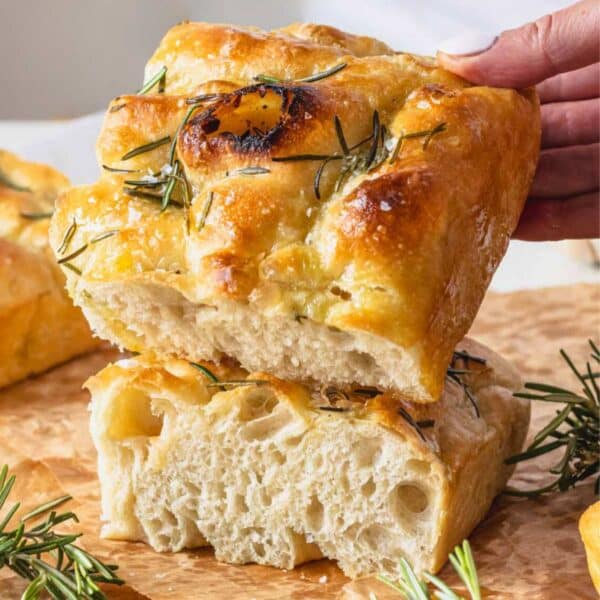
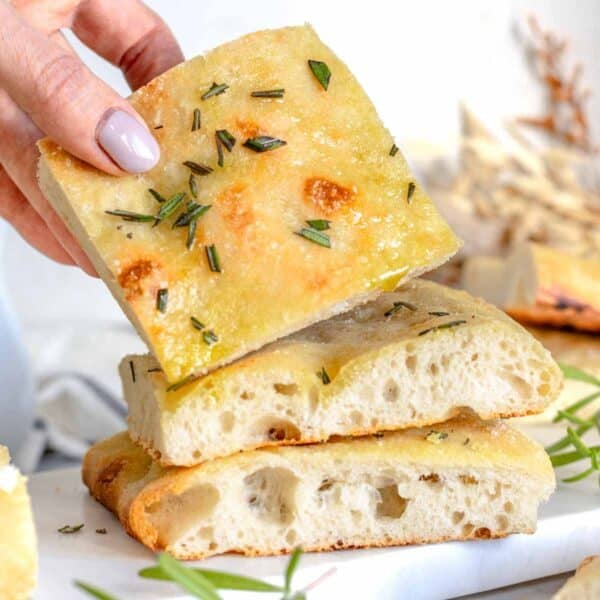

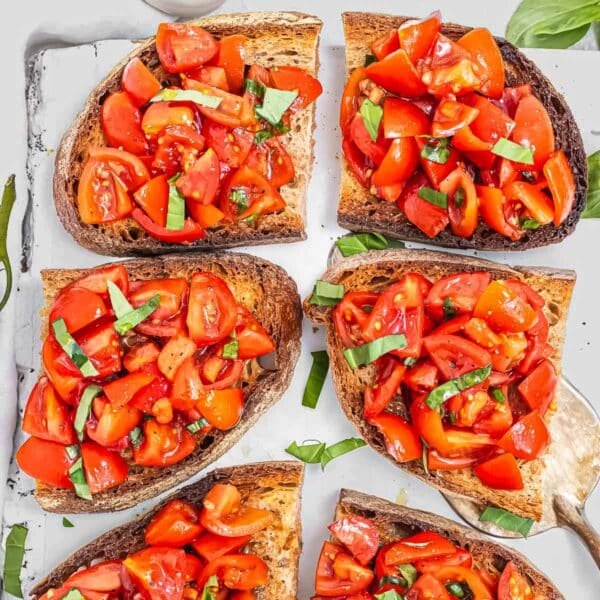
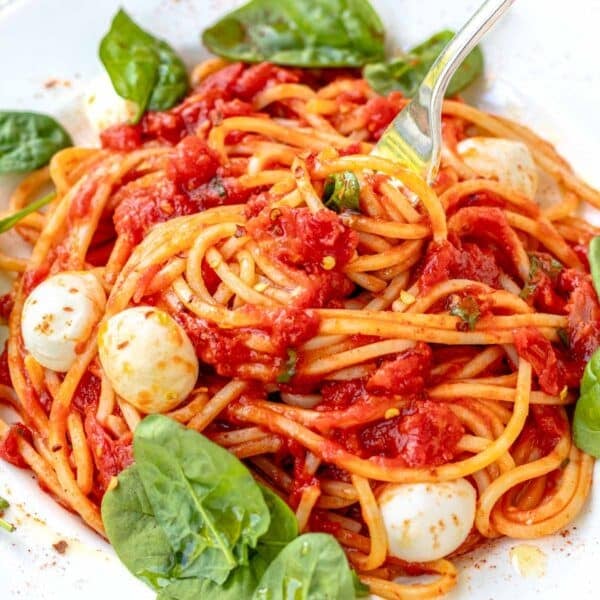
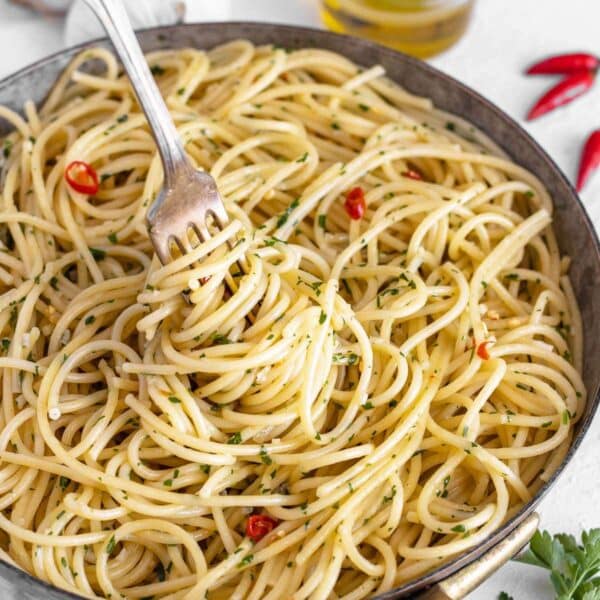
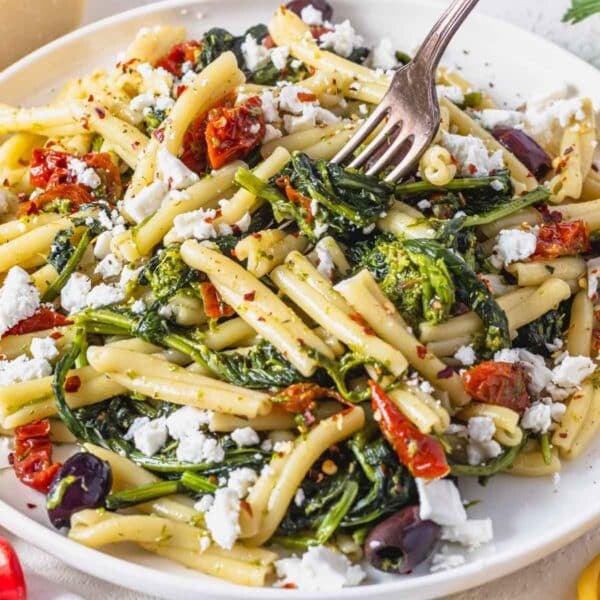
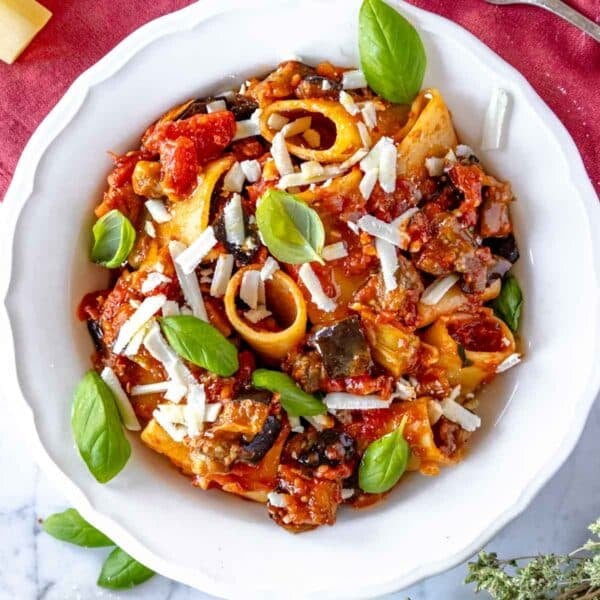
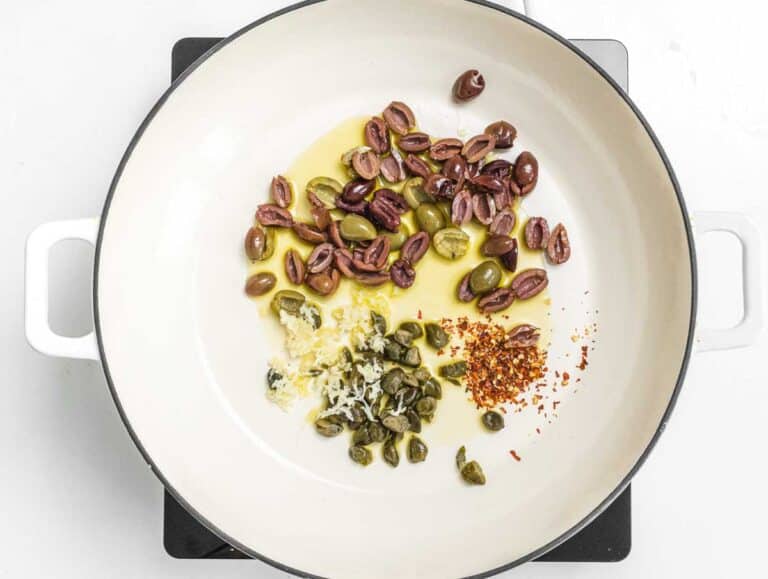
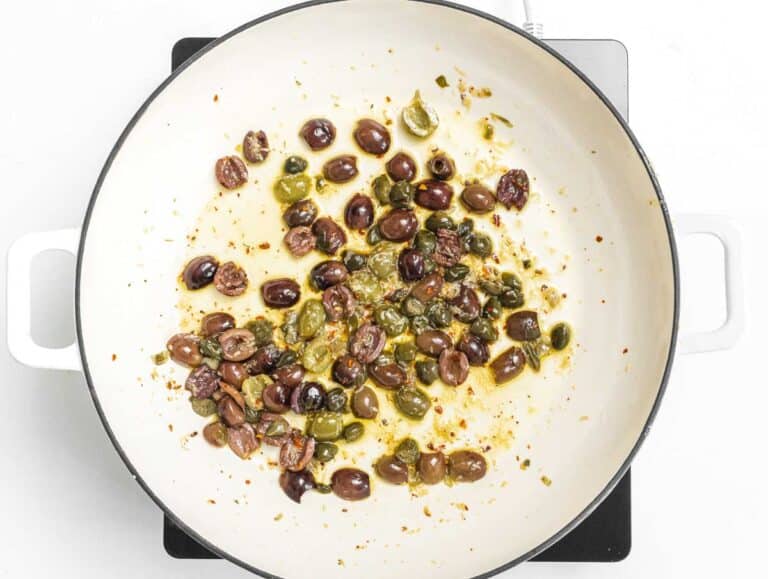
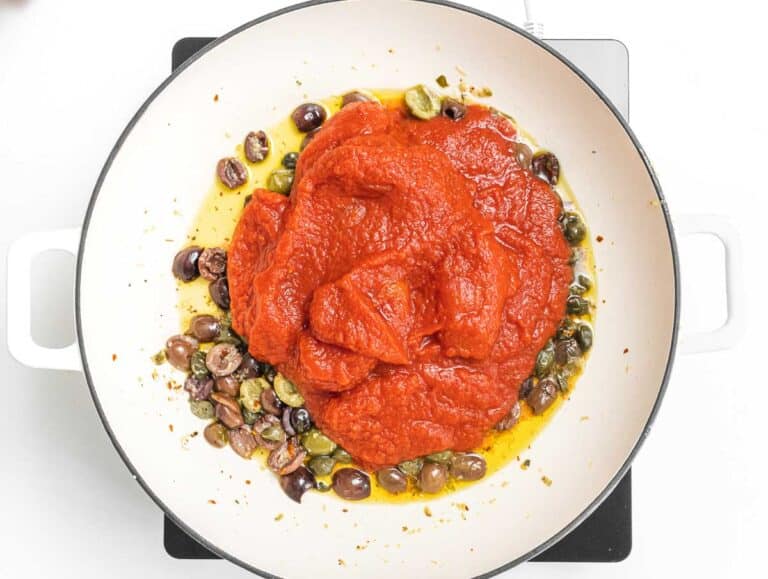
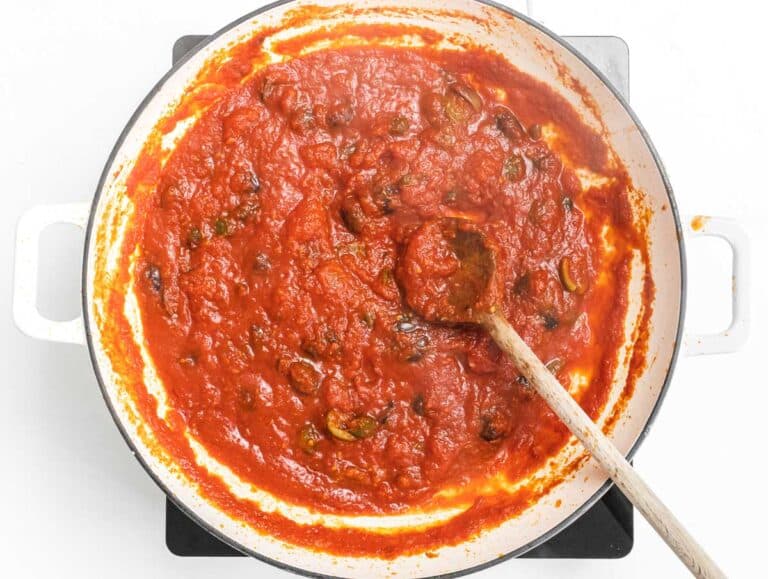
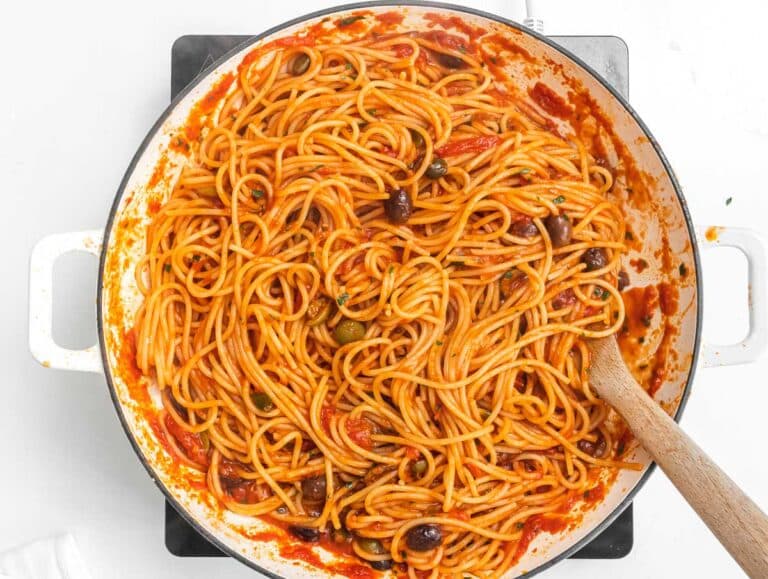
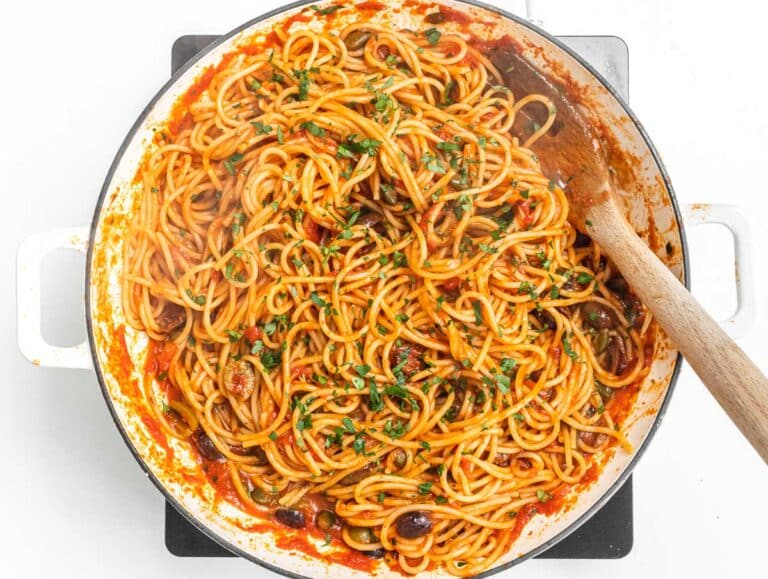
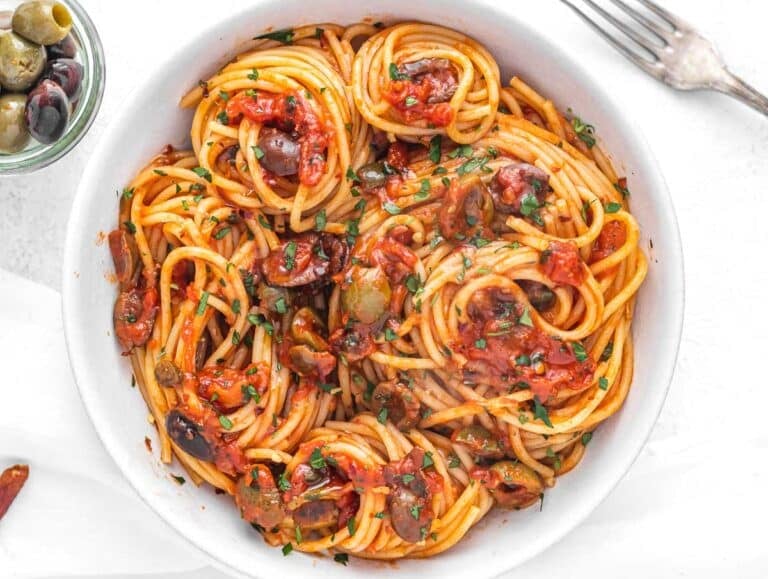
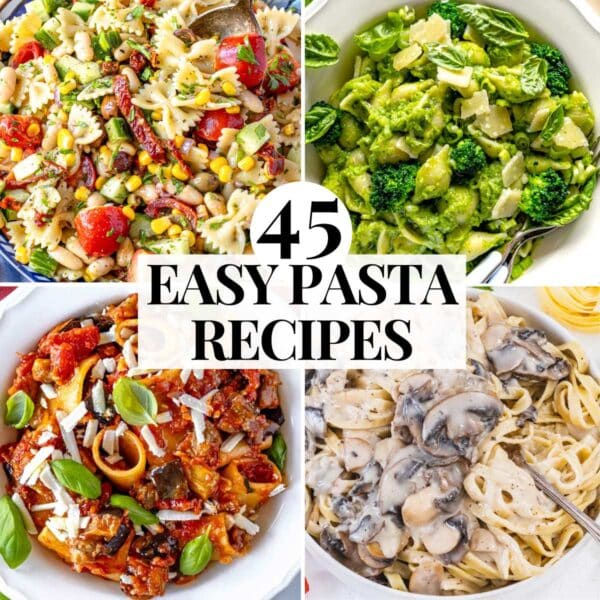

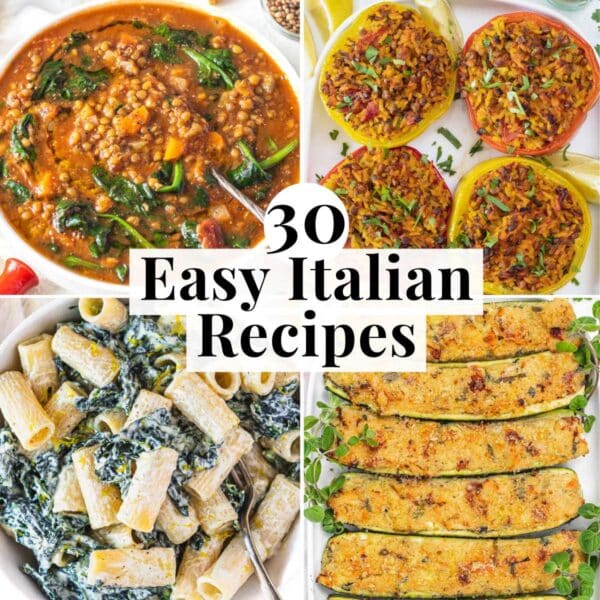


Delicious and so easy to make. I love that I have all the ingredients pretty much always. Thanks for sharing.
I loved this recipe. Easy, delicious, quick …. what else can I ask? Thank you. I really enjoy your presentation on Youtube shorts!
Hi Lynda, I’m so happy you found us on Youtube and even happier that you liked the recipe! Thanks for taking the time to leave a comment here, it means a lot to us! Have a great Monday. Cheers, Nico